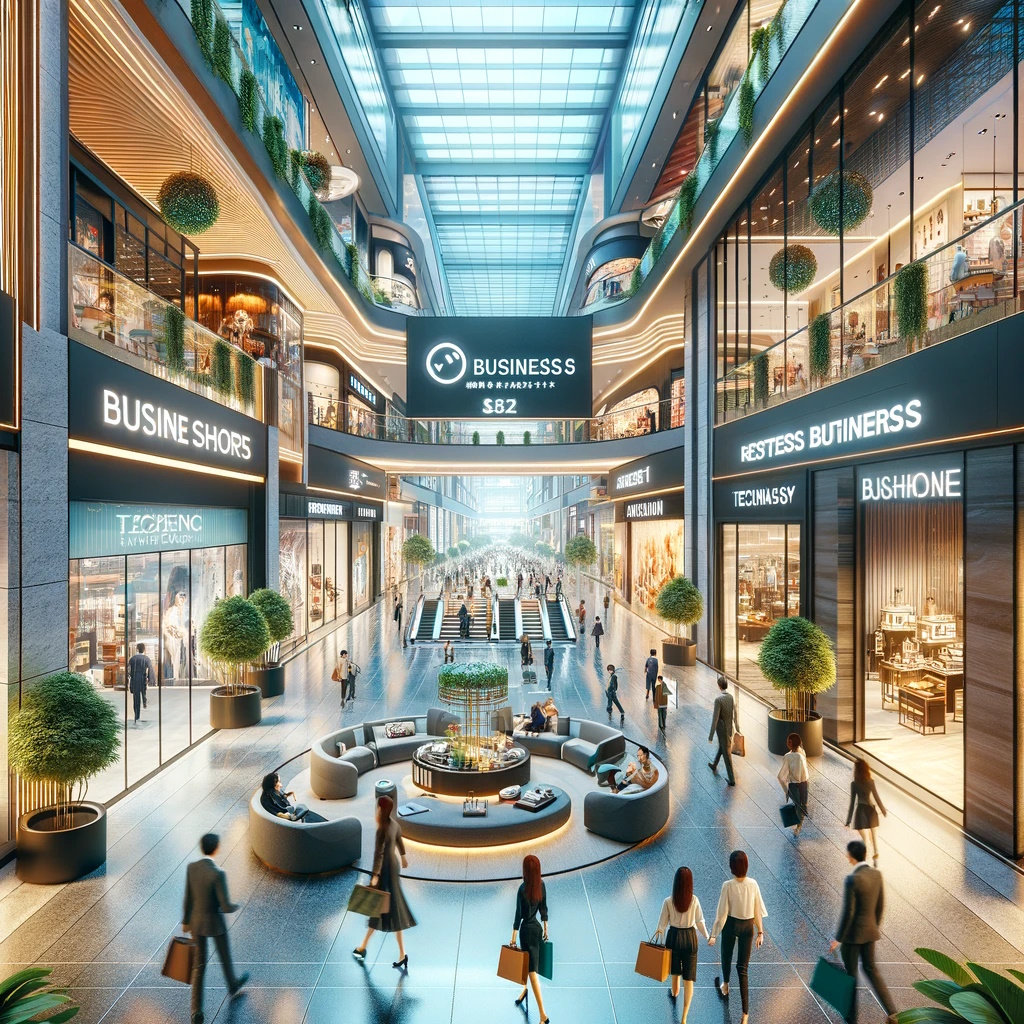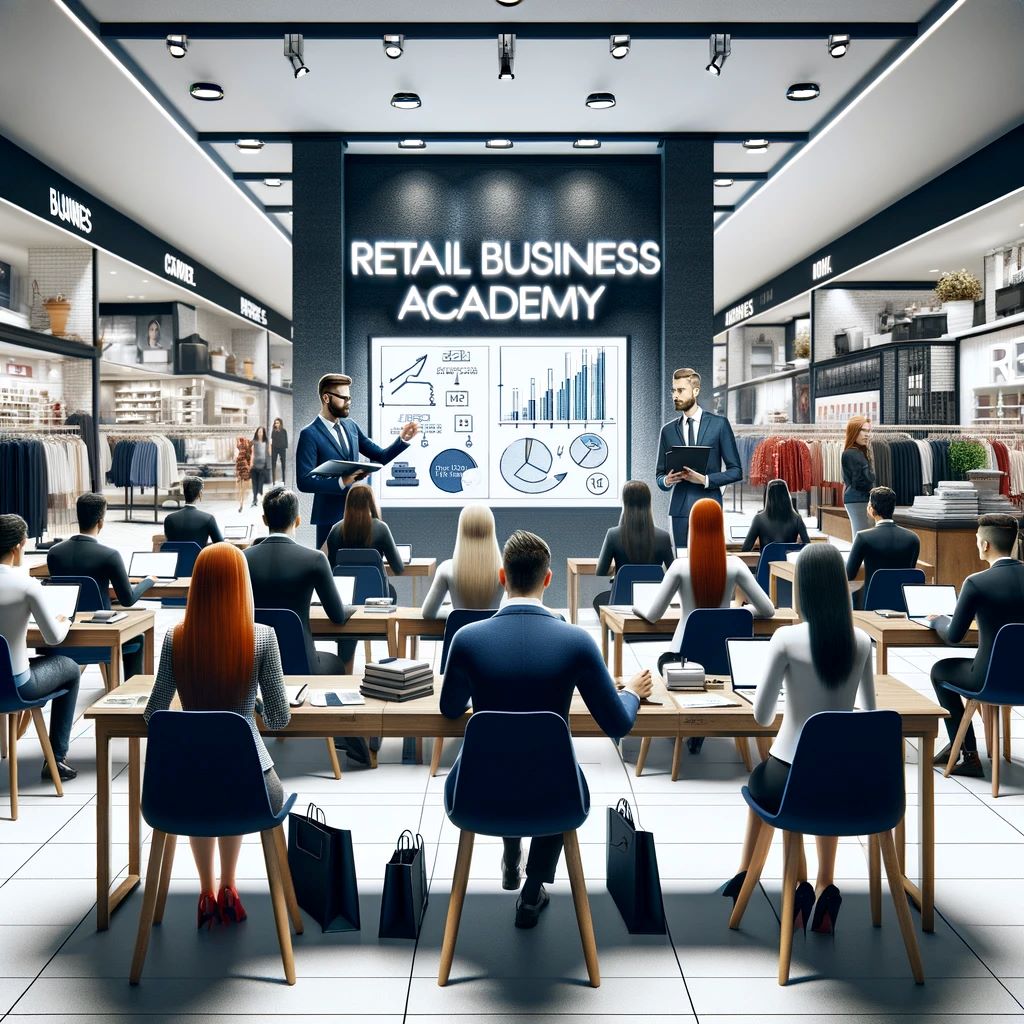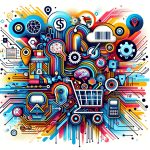
Understanding Socio-Economic Factors
The retail industry doesn’t operate in a vacuum; it’s deeply influenced by various external factors.
Among these, socio-economic elements play a crucial role in shaping the retail landscape.
This part delves into the socio-economic determinants that retailers must navigate.
-
Income Levels and Purchasing Power
The average income of a population directly impacts its purchasing power.
In regions with higher disposable incomes, consumers tend to spend more on non-essential and luxury items.
Conversely, in areas with limited disposable income, spending is often restricted to essential goods.
-
Economic Growth and Stability
A country’s economic growth rate and stability influence consumer confidence.
In booming economies, consumers are more likely to make significant purchases, such as homes, cars, or high-end electronics.
In contrast, during economic downturns or recessions, discretionary spending is curtailed.
-
Employment Rates
Employment levels are directly tied to consumer spending.
Higher employment rates translate to more people with disposable income, thus boosting retail sales.
On the flip side, high unemployment can dampen retail sales, with people prioritizing savings over spending.
-
Demographic Trends
Factors like population age, gender distribution, and family structures impact retail preferences.
An aging population might boost healthcare and wellness product sales, while areas with younger demographics could see a surge in tech and fashion retail.
-
Education and Awareness
Higher education levels often correlate with increased awareness about global trends, products, and services.
An educated consumer base is more likely to demand diverse and quality products, pushing retailers to diversify their offerings.
-
Social Mobility
As people move up the social ladder, their consumption patterns evolve.
Retailers need to understand and cater to the aspirations of upwardly mobile consumers, offering products and experiences that resonate with their newfound status.
-
Cultural and Social Norms
Cultural values, traditions, and social norms heavily influence retail consumption.
For instance, during festive seasons in many cultures, there’s a spike in certain product sales due to gift-giving traditions.
-
Government Policies and Regulations
Governmental socio-economic policies, such as taxation, minimum wage laws, and trade regulations, impact retail operations.
A favorable business environment, with tax incentives and relaxed regulations, can boost retail growth.
-
Access to Credit
The ease with which consumers can access credit affects their purchasing decisions.
In environments where credit is readily available and affordable, consumers might be more inclined to make big-ticket purchases.
-
Urbanization and Infrastructure Development
The shift from rural to urban living patterns has profound implications for retail.
Urban areas, with better infrastructure, attract more retail investments, leading to the growth of malls, supermarkets, and e-commerce hubs.
Socio-economic factors provide a framework within which retailers operate.
By understanding and adapting to these elements, retailers can make informed decisions, tailor their strategies, and ensure sustained growth in the ever-evolving retail landscape.
Navigating Technological Influences
In the modern era, technology is not just an enabler but a game-changer in the retail industry.
From enhancing customer experiences to streamlining operations, technological advancements are redefining the very fabric of retail.
This part delves into the profound technological influences that are shaping the retail business environment.
-
E-commerce Platforms
The rise of e-commerce platforms has provided consumers with the convenience of shopping from anywhere, anytime.
Websites and mobile apps have become the new storefronts, allowing retailers to reach a global audience without the constraints of physical boundaries.
-
Mobile Commerce
The proliferation of smartphones has given birth to mobile commerce or m-commerce.
Retailers are optimizing their online platforms for mobile devices, offering apps with user-friendly interfaces, one-click checkouts, and personalized notifications.
-
Augmented and Virtual Reality (AR & VR)
AR and VR are enhancing the online shopping experience by bridging the sensory gap.
Virtual try-ons, 3D product visualizations, and immersive store tours allow consumers to interact with products before making a purchase, reducing return rates and increasing satisfaction.
-
Artificial Intelligence (AI) and Machine Learning
AI-driven algorithms assist retailers in understanding customer preferences, predicting buying patterns, and personalizing shopping experiences.
Chatbots, powered by AI, provide instant customer service, while machine learning helps in inventory forecasting and demand prediction.
-
Internet of Things (IoT)
IoT devices, like smart shelves and connected POS systems, are revolutionizing in-store experiences.
They assist in inventory management, provide real-time data on stock levels, and enhance customer interactions through personalized offers and recommendations.
-
Blockchain Technology
Blockchain offers transparency and security in retail transactions.
It’s particularly beneficial in verifying product authenticity, ensuring ethical sourcing, and providing transparent supply chain tracking – essential for sectors like luxury goods and organic produce.
-
Robotics and Automation
In warehousing and logistics, robots are streamlining operations.
Automated storage and retrieval systems, drone deliveries, and robotic customer service assistants are enhancing efficiency and reducing operational costs.
-
Contactless and Digital Payments
The recent years have seen a surge in contactless payments, digital wallets, and cryptocurrency transactions.
Such payment methods offer speed, convenience, and enhanced security, promoting cashless economies.
-
Big Data and Analytics
Harnessing big data allows retailers to derive actionable insights from vast amounts of information.
Data analytics assists in optimizing pricing strategies, understanding customer sentiments, and devising targeted marketing campaigns.
-
Sustainable Technology
With growing environmental concerns, retailers are leveraging technology to adopt sustainable practices.
From eco-friendly packaging solutions to energy-efficient store designs, technology is at the forefront of green retailing.
The confluence of technology and retail is creating a dynamic landscape where innovation is constant.
For retailers, staying abreast of technological trends is not a mere competitive advantage but a necessity.
As the retail environment continues to evolve under the influence of technology, businesses that adapt and innovate will thrive, while those resistant to change risk obsolescence.
Grasping Competition and Market Dynamics
The retail industry is a bustling ecosystem, shaped by various forces that determine its pulse and direction.
Among the most influential factors are competition and market dynamics.
This article delves into how these elements mold the retail landscape and dictate business strategies.
-
The Intensity of Competitive Rivalry
The retail sector is notorious for its fierce competition.
With numerous players vying for consumer attention, retailers must consistently innovate, offer value, and enhance customer experiences to stand out.
- Price Wars: Frequent sales, discounts, and loyalty programs are used to attract and retain customers.
- Brand Differentiation: Retailers strive to build strong brand identities, emphasizing quality, service, or unique product offerings.
-
Threat of New Entrants
The ease with which new businesses can enter the retail market determines the threat level of new competitors.
- Barriers to Entry: High initial costs, established brand loyalties, and regulatory hurdles can deter new entrants.
- E-commerce Influence: The rise of online platforms has lowered entry barriers, allowing niche and small-scale retailers to reach wider audiences.
-
Threat of Substitute Products or Services
The availability of alternative products or services influences consumer choices and loyalty.
- Product Diversity: Retailers diversify product ranges to cater to varied tastes and reduce the risk of substitution.
- Value-added Services: Offering services like free delivery, extended warranties, or personal shopping consultations can deter customers from seeking alternatives.
-
Bargaining Power of Suppliers
The dynamics between retailers and their suppliers significantly impact profitability and product offerings.
- Exclusive Partnerships: Retailers may enter exclusive deals with suppliers, ensuring unique product availability.
- Vertical Integration: Some large retailers opt to produce their goods, reducing dependency on external suppliers.
-
Bargaining Power of Buyers
In today’s digital age, consumers are well-informed and have numerous options at their fingertips.
- Price Comparisons: Online platforms allow consumers to compare prices instantly, pushing retailers to offer competitive rates.
- Consumer Reviews: Feedback and reviews influence purchasing decisions, compelling retailers to prioritize customer satisfaction.
-
Evolving Consumer Preferences
Staying attuned to shifting consumer behaviors and preferences is vital.
- Sustainability: Modern consumers often prioritize eco-friendly and ethically sourced products.
- Digital Experience: With the rise of e-commerce, ensuring a seamless online shopping experience is crucial.
-
Technological Advancements
The integration of technology in retail reshapes competition and market dynamics.
- AI and Big Data: Retailers employing data analytics can better understand consumer behaviors and tailor marketing strategies.
- Virtual Reality: VR and AR can enhance online shopping experiences, offering virtual try-ons or 3D product views.
-
Macro-Economic Factors
Economic health, inflation rates, and currency strength can influence consumer purchasing power and retail strategies.
-
Globalization and International Competition
With globalization, retailers face competition not just from local businesses but international brands entering domestic markets.
Understanding competition and market dynamics is paramount for retailers aiming to carve a niche and thrive.
By staying agile, responsive, and consumer-centric, retailers can navigate the complex maze of market forces and emerge as industry leader.
Global Retailing Trends Shaping the Industry
The global retail landscape is in a constant state of flux, influenced by socio-economic shifts, technological advancements, and changing consumer behaviors.
As retailers grapple with these dynamics, certain trends stand out, marking the evolution of the industry.
This part delves into the significant global retailing trends.
-
Rise of Omni-channel Retailing
Modern consumers expect a seamless shopping experience, whether browsing online or visiting a physical store.
Omni-channel retailing, which integrates various shopping channels into a cohesive consumer journey, is becoming the norm.
Retailers are blending digital and in-store experiences, ensuring consistent brand touchpoints.
-
Experiential Retail
Beyond just transactions, modern retailing is about offering memorable experiences.
Pop-up shops, interactive store displays, workshops, and in-store cafes are ways retailers are enhancing the shopping journey.
The goal is to create an environment where consumers spend more time and engage deeply with the brand.
-
Sustainability and Ethical Practices
As global awareness about environmental and ethical issues grows, consumers are making more conscious purchasing decisions.
Retailers are responding by adopting sustainable practices, offering eco-friendly products, promoting transparency in sourcing, and ensuring ethical manufacturing processes.
-
Direct-to-Consumer (DTC) Models
Brands are increasingly bypassing traditional retail intermediaries to sell directly to consumers.
This DTC model allows for better profit margins, personalized marketing, and direct consumer feedback, fostering brand loyalty.
-
Personalization through Technology
Using AI and data analytics, retailers can curate personalized shopping experiences.
From product recommendations based on browsing history to targeted email campaigns, technology is enabling a tailored consumer-retailer interaction.
-
Growth of E-commerce and Mobile Shopping
Online shopping continues to surge, driven by convenience and a vast product selection.
Additionally, with the proliferation of smartphones, mobile commerce is on the rise, making shopping just a few taps away.
-
Evolving Payment Solutions
Contactless payments, digital wallets, cryptocurrency transactions, and buy-now-pay-later options are transforming the transaction process, offering consumers varied and convenient payment methods.
-
Expansion of Private Labels
Retailers are increasingly investing in their private labels, offering quality products at competitive prices.
These in-house brands provide higher profit margins and allow retailers to control product quality and branding.
-
Dynamic Pricing Strategies
Leveraging AI, retailers are adopting dynamic pricing strategies, adjusting prices in real-time based on demand, inventory, and competitive landscape.
This approach ensures profitability and competitive edge.
-
Global Expansion and Localization
While retailers are expanding globally, entering new markets, there’s a strong emphasis on localization.
Understanding local consumer preferences, cultures, and purchasing behaviors is paramount for successful global expansion.
As the retail industry navigates the complexities of the global landscape, staying abreast of these trends is crucial.
Retailers that adapt, innovate, and remain consumer-centric will not only survive but thrive in this dynamic environment.
Unlock Your Potential in Retail Management.
Enroll in our Retail Business Academy Today
Transform Your Career & Business!




















